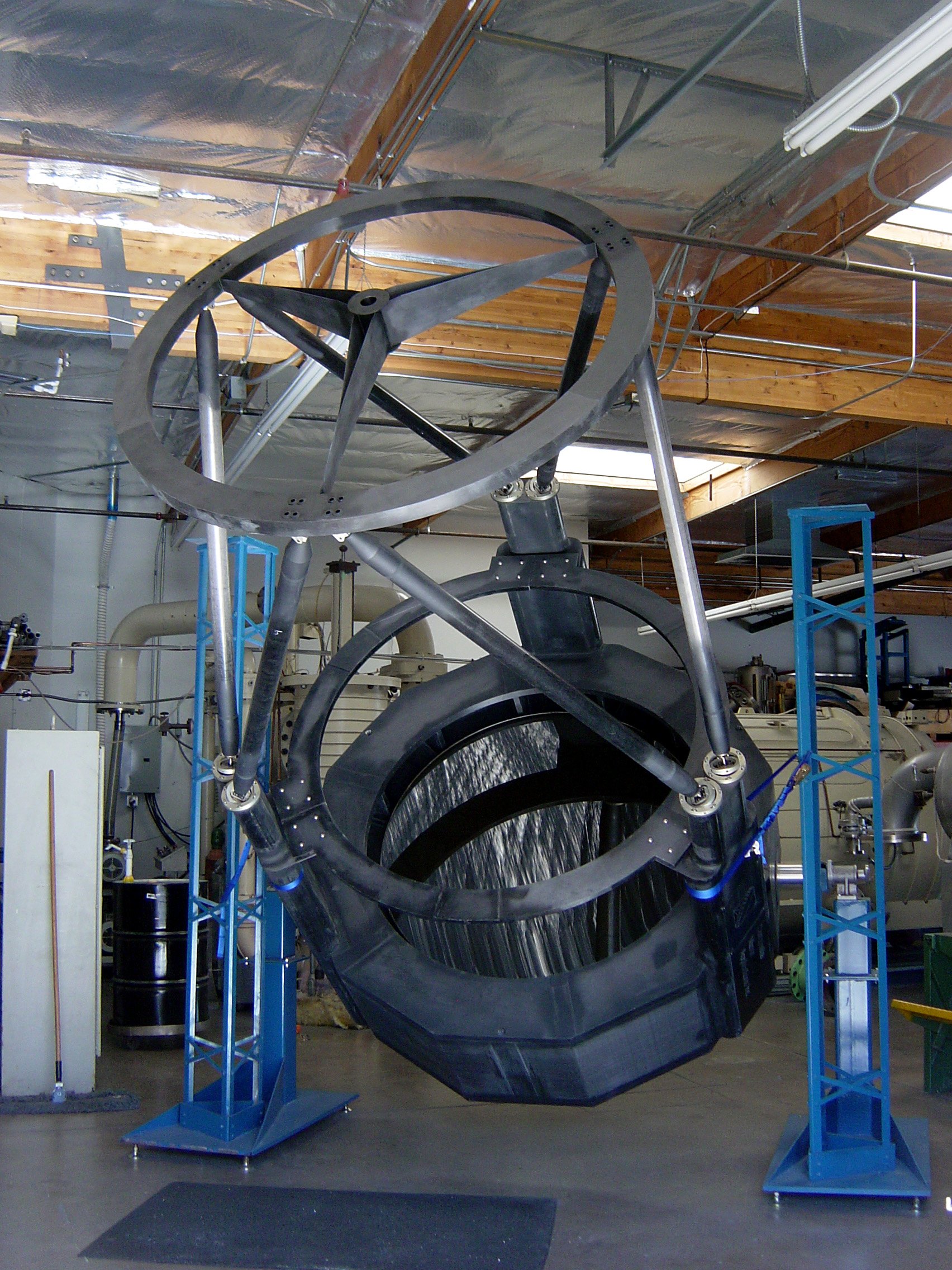Naval Prototype Optical Interferometer (NPOI) upgrade with lightweighttelescopes and Adaptive Optics: a status update
The portability of meter-class telescopes has been limited by the weight of the mirror, tube assembly and the mount required to provide pointing and tracking. The novel lightweight carbon fiber reinforced polymer telescopes being developed for array population at the Naval Prototype Optical Interferometer are orders of magnitude lighter than traditional telescopes. When combined with a lightweight carbon fiber mount, these telescopes will be easily transportable from one telescope station to another to change the interferometer baseline. The mount for a lightweight telescope is currently under development at Composite Mirror Applications, Inc. This paper reports on the design constraints of the mount, the scalability to larger aperture telescopes and the integration of sensors to measure the performance characteristics of this system during operation.
Development of Lightweight Carbon-Fiber Mirrors for the RICH 1 Detector of LHCb
The design, manufacture and characterization of lightweight carbon-fiber spherical converging mirrors for the RICH 1 Cherenkov detector of the LHCb experiment at CERN are described. The mirrors need to be lightweight to minimize the material for traversing particles and fluorocarbon-compatible to avoid degradation in the C4 F10 gas radiator of RICH 1. Four large-sized carbon-fiber mirrors covering a total surface area of ∼2m 2 were installed in RICH 1 in July 2007. The mirrors have a radius of curvature of ∼2700 mm, a high reflectivity of ∼90% in the 200-600 nm wavelength band, a low areal density of ∼5 kg/m2 equivalent to ∼1.2% of a radiation length. Results of the radiation and fluorocarbon testing of the mirror prototypes are also reported.


